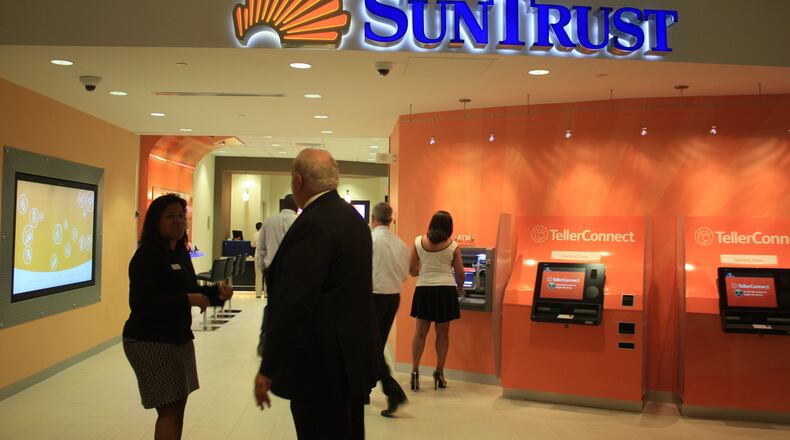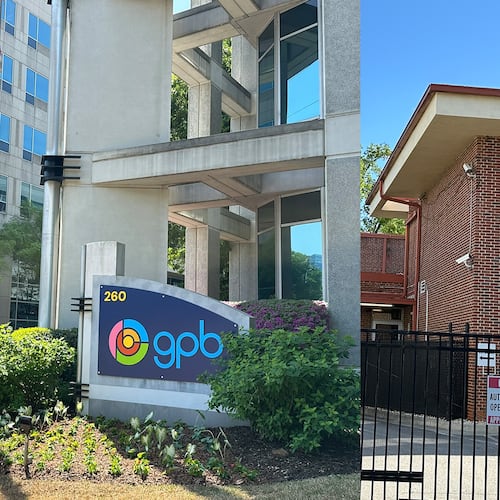In a world where you can store documents in the “cloud” and go days without using actual cash, can there still be much demand for that Gilded Age relic, the safe deposit box?
SunTrust is betting the answer, even in this digital world, is “yes.”
In a small branch in its downtown Atlanta headquarters, SunTrust recently became the first bank in the United States to install a robotic safe deposit box vault that allows customers to store and retrieve valuables without waiting for a bank employee to open the vault.
GALLERY: See how a customer interacts with new safe deposit
“It’s really high-tech. We’re the only bank in the U.S. that’s testing it,” said Tom McDermott, SunTrust’s senior vice president in charge of its retail banking strategy.
If customers like it, the Atlanta bank hopes to begin installing more of the automated safe deposit vaults later this year at branches in Buckhead and other affluent neighborhoods.
“We’ve had a waiting list for years” at some of those branches because their traditional safe deposit boxes are all rented, he said. The new boxes at its SunTrust Plaza Garden branch rent for $60 a year, the same as similar-sized traditional safe deposit boxes at other locations.
“We’re doing it as a convenience to the client,” he said.
The automated vaults are made by a unit of Swedish company Gunnebo. The firm hopes the self-service machines will halt the banking industry’s slow retreat from a service many view as too costly and low-profit.
“They can in fact make a profit from safe deposit boxes,” said Carlos Massa, Gunnebo’s business development manager for the Americas. He said two non-bank Canadian companies that use its automated vaults cater to customers willing to pay several hundred of dollars a year for 24-hour access to their safe deposit boxes.
European banks began using various versions of the robotic vaults about 20 years ago. Gunnebo and competitors it later bought up have installed more than 1,800 of the units in Europe, Asia and Canada. But Gunnebo didn’t get serious about selling in the United States until after the 2007-2009 financial crisis, when U.S. financial institutions began recovering more quickly than their European counterparts.
Gunnebo bought Cincinnati-based Hamilton Safe in 2012, and last year struck a deal to sell SunTrust one of its automated vaults, which cost $150,000 to $1 million, depending on the size. (SunTrust’s is one of the smaller ones, and it likely got a big discount as the U.S. launch customer, experts say.)
Because of costs and changing customer tastes, few new U.S. bank branches offer safe deposit boxes, said SunTrust’s McDermott. New branches are about half as big as existing ones and, with access to online banking and ATMs, customers don’t visit them as much as they used to. Traditional safe deposit vaults often are not profitable, many banks have concluded, because they take up too much room and employee time, and are inconvenient for customers.
SunTrust hopes the new automated vaults will change that equation because they take up about one-fourth as much space, and appeal to customers’ growing preference for self-service.
Here’s how it works: A customer uses a credit card or debit card to get access to a locked room where an ATM-like terminal waits. There, the customer types in an identification code to start the process. Then, while the robot is retrieving the safe deposit box from the vault, the customer puts his or her palm on a bio-metric scanner for further identification.
If all the IDs match up, a sliding door on the terminal opens, and the customer uses a unique key to open the safe deposit box.
To get access to a traditional safe deposit box, the customer typically provides a signature and other identification to a bank employee, who then accompanies him or her to the vault and unlocks it. Both the employee and the customer then use separate keys to remove the box from the vault. The customer then takes the box to another room to open it.
Cumbersome and expensive as the traditional approach is, it still may be the safest, said David P. Gunn, president of Safe Deposit Specialists, who trains bank employees on how to maintain secure safe deposit box operations.
In the traditional approach, “you’re never left in that vault by yourself,” he said.
In the drive to cut costs, he said, some banks about 15 years ago began using bio-metric scans and other electronic security systems to replace employees, giving customers unaccompanied access to the safe deposit vaults. As a result, there have been several multimillion-dollar lawsuits filed against banks after thieves took advantage and ransacked the vaults.
“Anything electronic can be defeated,” he said.
Gunn said he is reserving judgment on the new automated system being tested by SunTrust, because he hasn’t seen it. Unlike other automated systems, he noted, Gunnebo’s system doesn’t give customers direct access to the vault. But, he added, “my concern is where are those boxes stored before you get to the room?”
McDermott said only employees with “high level security” have access to the vault. The vault has massive concrete and steel walls that are “thicker than a traditional safe,” he said.
“It took us 23 hours to get it in” the branch during the installation, he said. “I don’t think anybody could knock it over.”
About the Author
Keep Reading
The Latest
Featured



